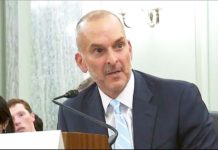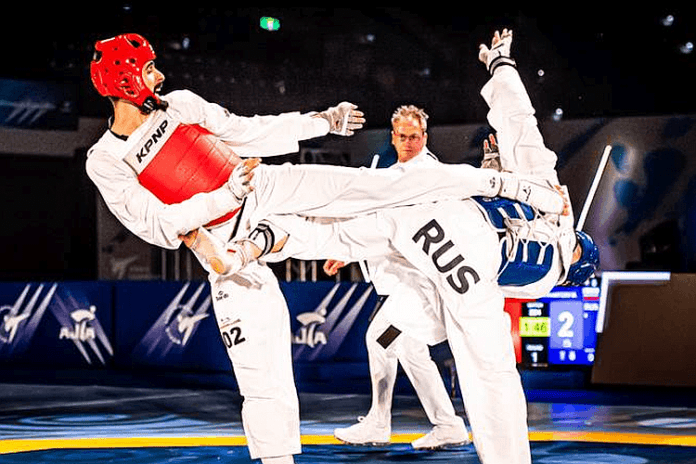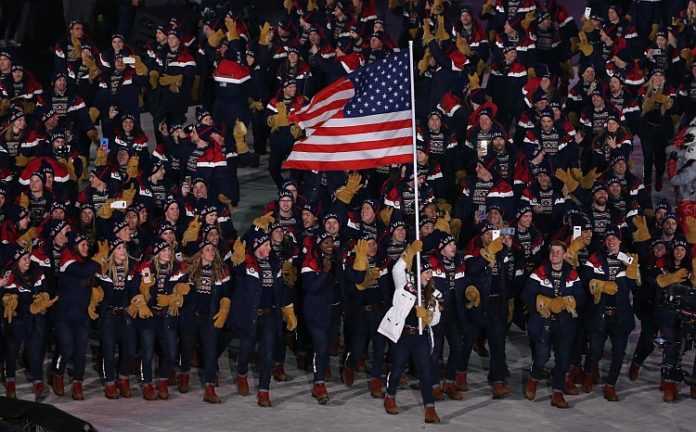 The United States Olympic and Paralympic Committee (USOPC) held its annual U.S. Olympic Assembly last weekend in Colorado Springs, Colorado and the new leadership said all the right things.
The United States Olympic and Paralympic Committee (USOPC) held its annual U.S. Olympic Assembly last weekend in Colorado Springs, Colorado and the new leadership said all the right things.
Board chair Susanne Lyons underscored the importance of continuing the fundamental reform of the organization in her comments to news media following the Board meetings, including:
“We obviously spent a lot of time talking about governance and reform. With all of the input that we received from all the different report – Ropes & Gray, from the Congressional reports, from the Borders Commission – we are very much in the process of cataloging and getting people’s points of view on how we reform, with many of those recommendations; a very great number of them are already in progress, so clearly that was something the Board discussed as well.”
Chief Executive Sarah Hirshland explained in detail some of the coming changes, especially at the athlete level:
“[W]e’re in process now of going from the strategic level down to tactical and programmatic levels, but I can tell you a few: increased emphasis on mental health services, looking at revisions to medical benefits, our elite-athlete health insurance policies around that. Certainly, we have already implemented significant changes in athlete safety policies and those are changes that will be felt in the natural progression of taking our delegation to Tokyo for the Games. So, those are the kinds of places where athletes will start to see impact.
“We are in the process, as you know, of looking for a Chief of Athlete Services, who will lead our Athlete Services function, that I expect to come in and have some real strong, strategic thinking around our athlete career and education programs, and how we really help with life-cycle transition for athletes along the way. That’s something we have talked a lot about and are very focused on.
“In addition, increased compliance for NGBs, our auditing process and compliance process with NGBs, coupled with our support that will come in the form of shared services for those NGBs , where they really do need administrative help to run their organizations. Many are very small with very small staffs. So we’re looking at what are the shared services, what does that model look like? That would be a few examples.”
These are right out of the request lists from the USOPC’s Athletes Advisory Council, the report of the USOPC-created Borders Commission, Congressional hearings and others. This is all to the good. But Hirshland also, subtly, signaled the trouble ahead. In her prepared remarks at the opening of the event last Thursday (12th), she noted:
“Our four priorities – and where you’ll see us invest and make substantive change in the coming years – are focused around how we create a better experience for our athletes, on and off the field of play; how we improve the effectiveness of all the organizations that serve our athletes; how we establish an athletes-first culture; and ultimately begin preparing for the awesome, transformational opportunity represented by hosting the Games in LA in 2028.”
Speaking to reporters about that plan, to be implemented in a strategic program from 2020-24, she explained that during the Board meetings:
“[W]e have really outlined in detail four pillars of our strategic planning that’s now leading the sort of strategic, and also the tactical and resource-allocation work we’ll do for the next few months before we bring that plan back to the Board.”
Key words: “resource-allocation work.”
Translation: the USOPC does not have the money it needs to implement the kinds of programs it would like to in meeting the real and perceived needs of its primary constituent groups – athletes, coaches and National Governing Bodies – as well as the demands of the Congress as it considers legislative and oversight changes to the U.S. Olympic Movement.
The idea that the USOPC is somehow sitting on a mountain of money so large that it only has to eliminate its wasteful spending to fund thousands of athletes from Maine to California is not only wrong, but laughable. And that’s a major problem, and recognized explicitly in the Borders Commission report filed last July.
Per the USOPC’s own financial statements (collected here), it took in $296 million in revenue in 2018 (an Olympic Winter Games year) and spent $270 million. Of that expense number, it spent $81.1 million on grants to athletes, to National Governing Bodies and for athlete health insurance coverage (for about 2,100 athletes). That was part of $211.0 million in total spent in support athletes, competitions and travel, training facilities and more.
That’s where most of the money goes. Here’s where most of it comes from:
Sponsorships:
● 2018: $125.2 million in cash
● 2017: $130.4 million in cash
● 2016: $87.7 million in cash
Broadcast revenue:
● 2018: $121.8 million
● 2017: $5.2 million
● 2016: $169.5 million
Donations:
● 2018: $23.3 million
● 2017: $15.6 million
● 2016: $22.8 million
The broadcast revenue from NBC will go up somewhat based on the new agreement for the 2022-32 Games, but not by that much. Calculations show an average of $88.7 million per year on average compared with $79.9 million under the current agreement. So that’s not going to change the situation much.
Sponsorship revenue was way up in 2017 and 2018 (good!), but how much more can be expected from this is problematic, since the USOPC does not put on any revenue-producing events of its own; its job is to field teams for events put on by others: the Olympic and Pan American Games.
And donation revenue is, frankly, modest.
Still look like a lot of money? If the USOPC paid every Olympic and Winter Olympic athlete – not counting the Pan Am Games here – an annual honorarium/salary/stipend of $5,000 a month or $60,000 annually, that would cost $48.0 million year, for 800 athletes. The U.S. also took 664 athletes to Lima for the Pan American Games this year; aren’t they also deserving?
And what about the Paralympic Games, to which the U.S. sent 279 athletes in 2016 and 68 to the Winter Paralympics in 2018? What do they get?
The Borders Commission had a whole list of things – not including the stipend idea above – that the USOPC could fund for athletes, but was clear that there is not, at present, money to pay for these things.
It’s pretty easy to see how spending money on athletes gets out of hand very quickly. And with the number of athletes continuing to increase with added sports and events to each of these Games, the need for athlete support services (and the funding needed) will continue to grow.
Neither Lyons or Hirshland announced that the lengthy list of proposed by-law changes had been passed at last weekend’s Board meeting. But neither was it revealed whether there was any discussion by the Board of how to increase the USOPC’s revenues to meet even its own desires for athlete support.
That’s why there will be a need for “resource allocation,” and the USOPC’s critics will be quick to point out the deficiencies in program support, but will no doubt be silent on how to increase the funding available to do more.
Rich Perelman
Editor
If you enjoyed this commentary, sign up to receive the TSX Daily by e-mail by clicking here. You can also refer a friend by clicking here.


























